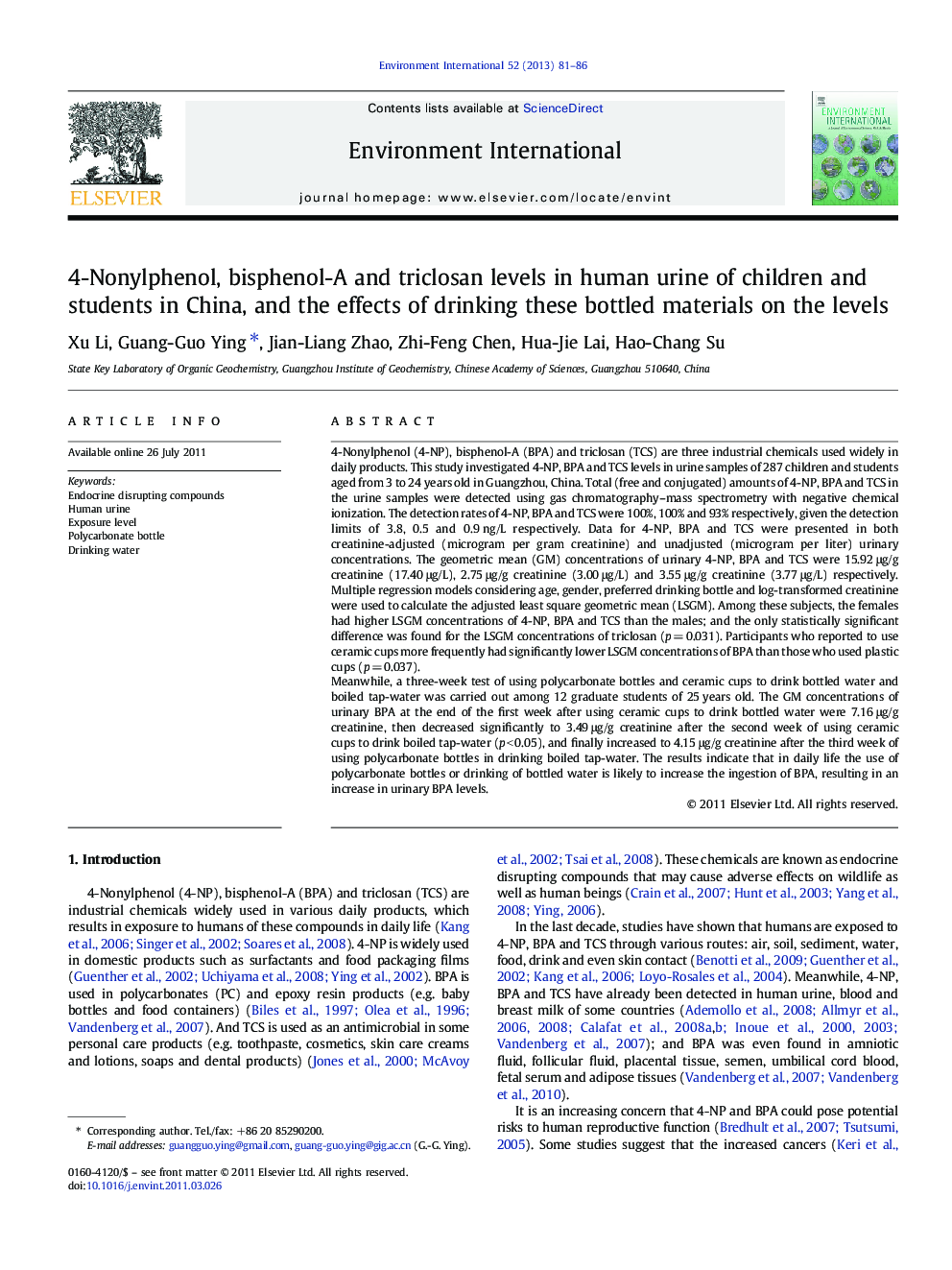| کد مقاله | کد نشریه | سال انتشار | مقاله انگلیسی | نسخه تمام متن |
|---|---|---|---|---|
| 4422885 | 1619075 | 2013 | 6 صفحه PDF | دانلود رایگان |

4-Nonylphenol (4-NP), bisphenol-A (BPA) and triclosan (TCS) are three industrial chemicals used widely in daily products. This study investigated 4-NP, BPA and TCS levels in urine samples of 287 children and students aged from 3 to 24 years old in Guangzhou, China. Total (free and conjugated) amounts of 4-NP, BPA and TCS in the urine samples were detected using gas chromatography–mass spectrometry with negative chemical ionization. The detection rates of 4-NP, BPA and TCS were 100%, 100% and 93% respectively, given the detection limits of 3.8, 0.5 and 0.9 ng/L respectively. Data for 4-NP, BPA and TCS were presented in both creatinine-adjusted (microgram per gram creatinine) and unadjusted (microgram per liter) urinary concentrations. The geometric mean (GM) concentrations of urinary 4-NP, BPA and TCS were 15.92 μg/g creatinine (17.40 μg/L), 2.75 μg/g creatinine (3.00 μg/L) and 3.55 μg/g creatinine (3.77 μg/L) respectively. Multiple regression models considering age, gender, preferred drinking bottle and log-transformed creatinine were used to calculate the adjusted least square geometric mean (LSGM). Among these subjects, the females had higher LSGM concentrations of 4-NP, BPA and TCS than the males; and the only statistically significant difference was found for the LSGM concentrations of triclosan (p = 0.031). Participants who reported to use ceramic cups more frequently had significantly lower LSGM concentrations of BPA than those who used plastic cups (p = 0.037).Meanwhile, a three-week test of using polycarbonate bottles and ceramic cups to drink bottled water and boiled tap-water was carried out among 12 graduate students of 25 years old. The GM concentrations of urinary BPA at the end of the first week after using ceramic cups to drink bottled water were 7.16 μg/g creatinine, then decreased significantly to 3.49 μg/g creatinine after the second week of using ceramic cups to drink boiled tap-water (p < 0.05), and finally increased to 4.15 μg/g creatinine after the third week of using polycarbonate bottles in drinking boiled tap-water. The results indicate that in daily life the use of polycarbonate bottles or drinking of bottled water is likely to increase the ingestion of BPA, resulting in an increase in urinary BPA levels.
► 4-Nonylphenol, bosphenol-A and triclosan found in Chinese urine samples.
► The females had higher LSGM concentrations than the males.
► Drinking water using PC bottles increased significantly the exposure levels of BPA.
Journal: Environment International - Volume 52, February 2013, Pages 81–86